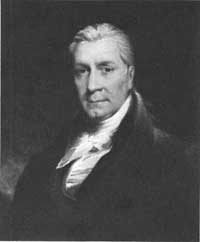Thomas Fitzsimons facts for kids
Quick facts for kids
Thomas Fitzsimons
|
|
|---|---|
 |
|
| Member of the U.S. House of Representatives from Pennsylvania's At-large district | |
| In office March 4, 1789 – March 3, 1795 |
|
| Preceded by | (District created) |
| Succeeded by | John Swanwick Frederick A.C. Muhlenberg Richard Thomas Samuel Sitgreaves and John Richards Daniel Hiester John Andre Hanna John W. Kittera Thomas Hartley Andrew Gregg David Bard and Samuel Maclay William Findley Albert Gallatin |
| Personal details | |
| Born | October 1741 Kingdom of Ireland |
| Died | August 26, 1811 (aged 69) Philadelphia, Pennsylvania, U.S. |
| Resting place | St. Mary's, Philadelphia |
| Political party | Pro-Administration |
| Occupation | statesman, merchant, soldier |
Thomas Fitzsimons (born October 1741, died August 26, 1811) was an important Irish-American businessman and leader from Philadelphia. He represented Pennsylvania in several important government groups. These included the Continental Congress, the Constitutional Convention, and the U.S. Congress. He signed the Constitution of the United States, making him one of America's Founding Fathers. He was also a slave owner.
Contents
Early Life and Business
Thomas Fitzsimons was born in Ireland in 1741. In the mid-1750s, his family moved to Philadelphia. His father joined them soon after. Thomas received a good education. This allowed him to start working as a clerk in a trading company.
On November 23, 1761, he married Catherine Meade. He then started a business with her brother, George Meade. Their company focused on trade with the West Indies. It was very successful for more than 41 years.
Standing Up for Rights
The British government soon created new taxes. These taxes were meant to help pay for their finances. One of these was the Stamp Act of 1765, which many people disliked. Fitzsimons became very active in the Irish business community in Philadelphia.
In 1771, he helped start the Friendly Sons of St. Patrick. Later, in 1774, he joined a group that protested the Coercive Acts. These acts were unfair laws passed by the British.
Joining the Revolution
When Pennsylvania began preparing for war, Fitzsimons joined in. He became a captain of a local defense group. He raised this group himself. They served under Colonel John Cadwalader.
His company first guarded the New Jersey coast. This was to protect against British invasion. Later, his group was a reserve unit at the 1776 Battle of Trenton. This was a key battle in the American Revolutionary War.
Later in the war, he served on the Pennsylvania Council of Safety. He also led a board that oversaw the new Pennsylvania Navy. In this role, he helped organize resources for Pennsylvania. He also provided supplies, ships, and money. This supported both Pennsylvanian and French forces.
A Career in Politics
Thomas Fitzsimons began his political career in 1782. He was a delegate to the Continental Congress until 1783. He also served in the Pennsylvania House of Representatives from 1786 to 1795.
In 1787, he was a delegate to the U.S. Constitutional Convention. This meeting created the Constitution of the United States. Fitzsimons believed in a strong national government. He supported ending slavery. He also wanted the United States Congress to be able to tax imports and exports. He thought the House of Representatives should have equal power with the United States Senate in making treaties. He did not support universal suffrage, which means everyone having the right to vote.
He was one of three Catholic signers of the U.S. Constitution. The others were Daniel Carroll and Charles Carroll.
Serving in Congress
After the Constitution was created, Fitzsimons served in the first three sessions of the House of Representatives. He was a member of the Federalist Party. He supported taxes that protected American businesses. He also wanted a strong navy. He helped write the 1794 law that created the first six ships of the U.S. Navy.
Fitzsimons lost his re-election in 1794. This was partly because public opinion turned against the Federalist Party. People were unhappy about how the Whiskey Rebellion was stopped.
Even though he didn't hold elected office again, Fitzsimons stayed active. In 1798, he led a group of merchants. They raised money to build a warship. This ship was used in the Quasi-War.
Later Life and Contributions
After leaving politics, Fitzsimons remained involved in his community. He was president of Philadelphia's Chamber of Commerce. He was also a trustee for the University of Pennsylvania. He served as a director for the Delaware Insurance Company. From 1781 to 1803, he was a director of the Bank of North America. He helped start this bank. He also supported efforts to create Georgetown College. Fitzsimons also helped found the Insurance Company of North America.
Thomas Fitzsimons passed away on August 26, 1811. He was buried in Philadelphia. His resting place is the cemetery of St. Mary's Catholic Church.

